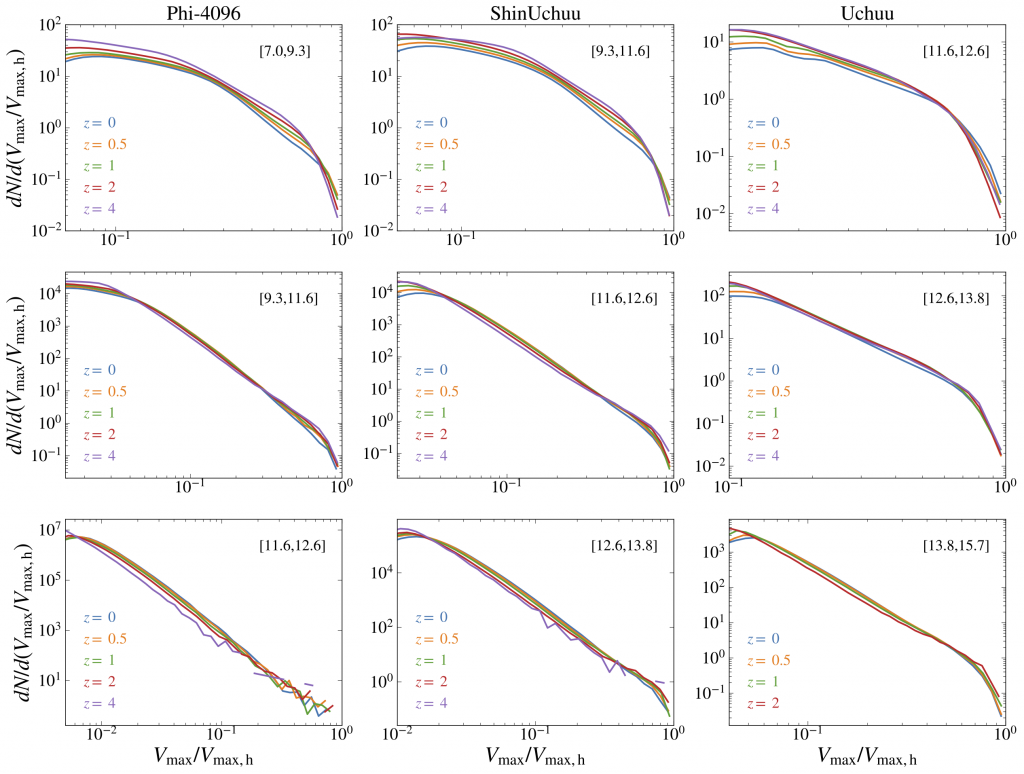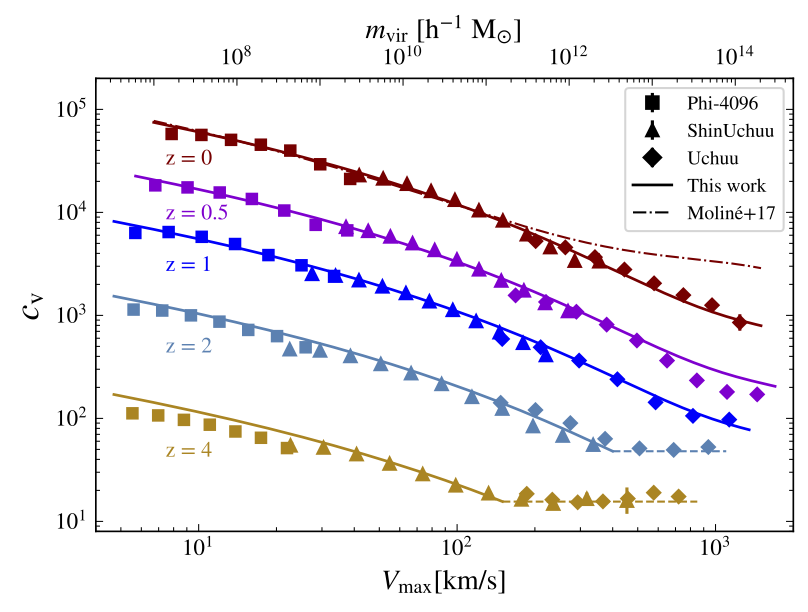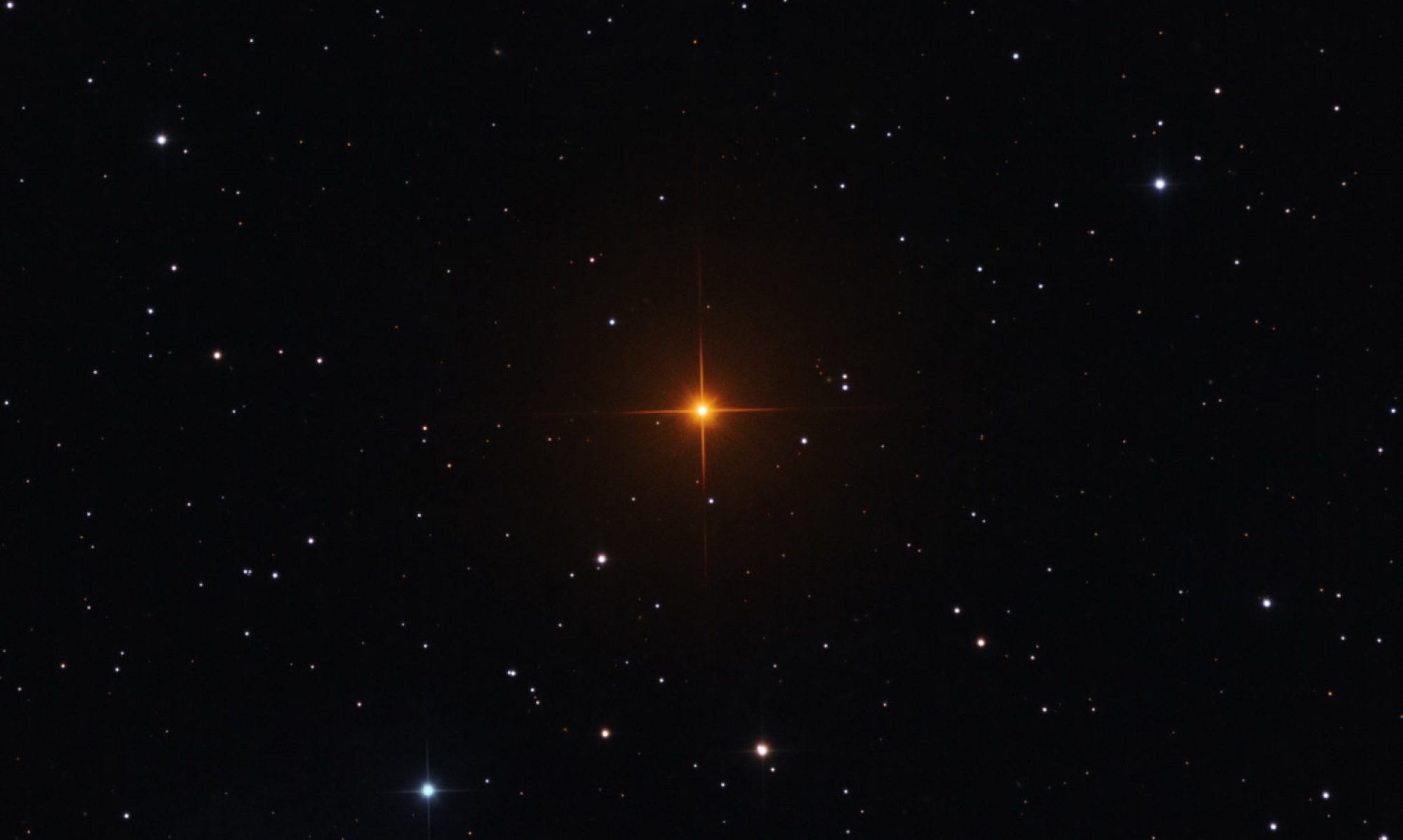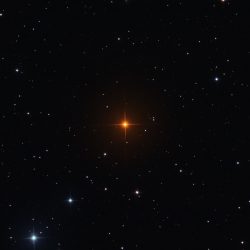
Written by Angie Moliné.
Summary of the paper with the same title submitted to MNRAS.
arXiv: 2110.02097
In the current standard model of cosmology, ΛCDM, the structure of the Universe is formed via a hierarchical, bottom-up scenario with small primordial density perturbations growing to the point where they collapse into the filaments, walls and eventually dark matter (DM) haloes that form the underlying large-scale-structure filamentary web of the Universe. Galaxies are embedded in these massive, extended DM haloes teeming with self-bound substructure, the so-called subhaloes.
The study of the statistical and structural properties of the subhalo population is of prime importance because subhaloes represent important probes of the mass accretion history and dynamics of host haloes and accordingly, of the underlying cosmological model. In addition to representing a cosmological test by themselves, understanding both the statistical and structural properties of subhaloes plays a key role for many other diverse studies, such as gravitational lensing, stellar streams and indirect or direct DM detection experiments.
Studying the complicated dynamics of these subhaloes within their hosts requires numerical simulations, which have proven to be crucial for understanding structure formation in the Universe. By making use of data at different cosmic times from the Phi-4096 and Uchuu suite of high-resolution N-body cosmological simulations, in this work we improve upon previous studies aimed at characterize the subhalo population. More precisely, the superb numerical resolution and halo statistics of these simulations allow for a careful and dedicated study – for the first time consistently over more than seven decades in ratio of subhalo-to-host-halo mass – of the dependency of subhalo abundance with halo host mass as a function of subhalo mass, the maximum circular velocity of particles within the subhalo, Vmax, and distance to the host halo centre. We also dissect the evolution of these dependencies over cosmic time.

Subhalo structural properties are codified via a concentration parameter that does not depend on any specific, pre-defined density profile and relies only on Vmax. We derive such relation in the range 7-1500 km/s and find an important dependence on distance of the subhalo to the host halo centre, as already described in Moliné et al. (2017) for subhaloes in Milky-Way-like hosts. Interestingly, we also find subhaloes of the same mass to be significantly more concentrated when they reside inside more massive hosts. We provide accurate fits that take into account all mentioned dependencies. In addition, the study of the evolution of subhalo concentrations with cosmic time is very scarce in the literature as of today. We investigate such redshift evolution of concentrations and provide an accurate fit.

Our results offer an unprecedented detailed characterization of the subhalo population, consistent over a wide range of subhalo and host halo masses, as well as cosmic times. Our analyses enables precision work in any future research involving dark matter halo substructure.

